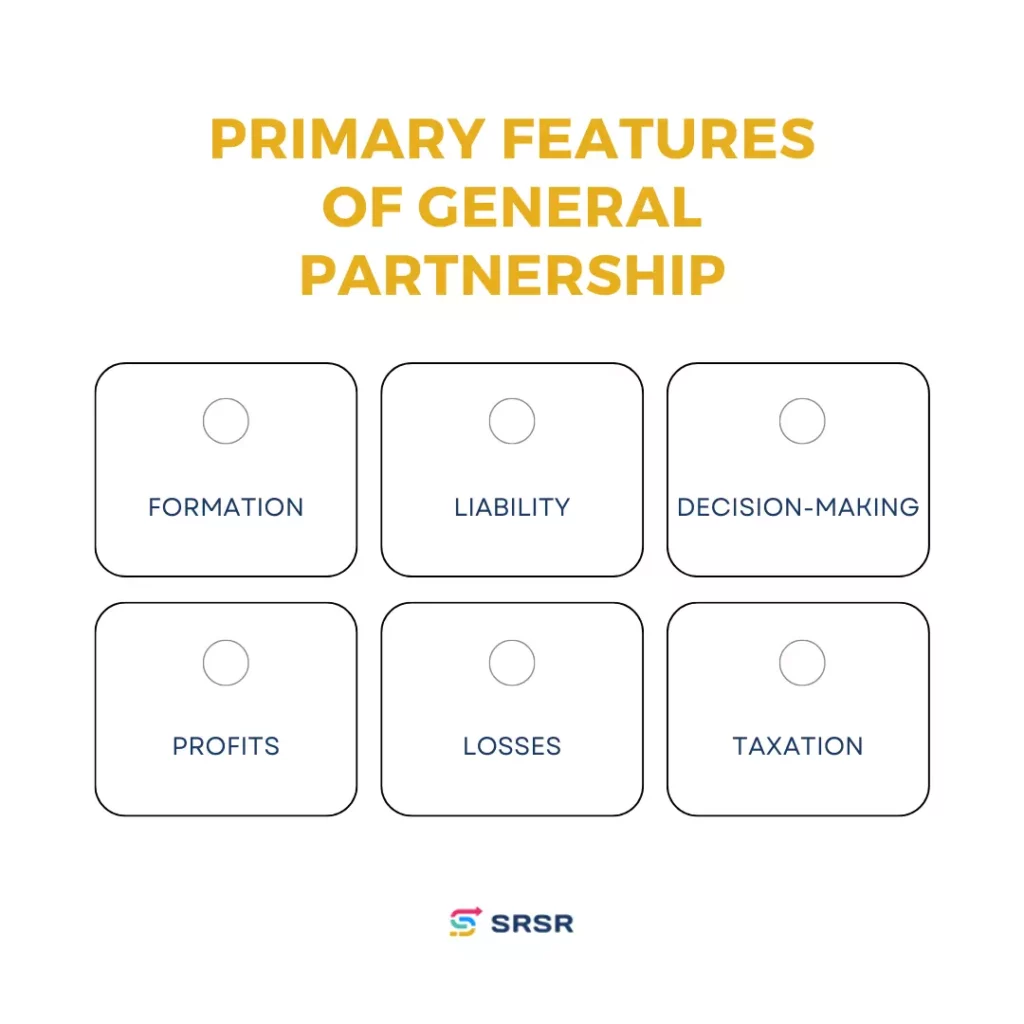General partnerships are a crucial part of the business landscape. Anyone learning more about business structures should have solid foundational knowledge. In this comprehensive rundown, we will explore the world of a general partnership. Moreover, we will be exploring their inherent features and differences from other types. We’ll also cover their advantages and disadvantages.
Defining A General Partnership
A general partnership is a type of organizational or business structure that sees two or more partners convene to share general ownership, responsibilities, and profits of a business. Each partner in a general partnership has equal authority to make various business decisions, contribute capital or reinvest business funds, and manage the daily operations of the business.
Additionally, and perhaps most importantly for some, each partner is personally liable for any debts or legal issues arising from the partnership or business.
Primary Features of General Partnership

- Formation – Establishing or creating a general partnership is comparatively simple and inexpensive compared to other structures. The partners need to agree on the terms of the partnership, and they can do so orally, in writing, or through digital communications. While it can be a verbal agreement, it’s highly recommended to have some official record or hard copy of the agreement,in case potential disputes arise
- Liability – In a general partnership, each partner has unlimited personal liability for the debts and legal obligations of the business. This means that if the partnership cannot pay its debts, creditors or lenders can pursue each partner’s personal assets until the debts are satisfied.
- Decision-Making – General partners share equal decision-making authority. This means that each partner has the legitimate power to make decisions on behalf of the entire partnership, though often, it is agreed upon that they must consult with each other before making decisions of a specific size or scope.
- Profits & Losses – Partners in a general partnership will share profits and losses equally. The only exception is if the split is specified otherwise in the partnership agreement.
- Taxation – General partnerships are flow-through entities, meaning they are not taxed at the entity level. The income, deductions, and credits from the partnership flow through to the partners, who report the information on their respective tax returns. This is known as pass-through taxation, unlike larger corporations that will be subject to double taxation.
How General Partnerships Differ From Other Types Of Partnerships
General partnerships differ from limited partnerships significantly. Unlike limited partners, general partners have no limits on liabilities. Moreover, general partners are frequently involved in daily operations. The General partners manage the business and have unlimited liability, but limited partners contribute capital and have limited liability.
A limited liability partnership, on the other hand, combines elements of both. All partners have limited liability protection, and they can participate in the management of the business. LLPs are more common in professional services, such as accounting firms and law offices.
General Partnership Advantages & Disadvantages

Advantages of General Partnership
- General partnerships are straightforward to establish and need the least amount of paperwork compared to other business structures.
- Pass-through taxation avoids the double taxation that larger corporations experience.
- Partners can pool their resources, such as capital, skills, and experience, which can drastically increase the chances of the venture finding success.
- General partnerships are endlessly flexible, and the partners have the freedom to determine how they want to manage the business, share or allocate profits, and make decisions about the business and its operations.
Disadvantages of General Partnership
- One of the biggest disadvantages of general partnerships is unlimited liability. Unlimited personal liability of the partners for debts and other obligations the business fails to fulfill is a big drawback for many potential entrepreneurs.
- Depending on the partnership agreement there can be an elevated potential for disputes. Without a clear agreement, even minor disputes have the potential to affect the overall stability and success of the business.
- In most cases, a general partnership dissolves upon the death, withdrawal, or bankruptcy of a partner. This has the potential to create a significant level of uncertainty for the business and its future.
Management and Operations of General Partnerships
For the effective management and day-to-day operations of general partnerships, many components are needed:
- Partnership Agreement: A well-drafted partnership agreement is essential for smooth management. It should outline the roles and responsibilities of each partner, profit and loss allocation, the policies and processes for making decisions, methods for handling disputes, and procedures for adding or removing partners from the general partnership.
- Decision-Making: Decision-making is typically shared among all partners. So, it’s critical to establish clear communication channels and processes for making big decisions in the partnership.
- Financial Management: Partners should be willing and able to maintain accurate financial records, and create clear guidelines for managing the partnership’s assets, including setting up bank accounts.
- Delegation & Division of Responsibilities: Smooth and effective management relies on everyone filling their role, and delegating tasks and responsibilities to each partner helps leverage skills and expertise accordingly.
- Clear Communication: Regular meetings and clearly defined communication policies should encourage open discussions and address any concerns raised quickly.
- Exit Strategy: Planning for the future is necessary. Hence, be ready to discuss how partners can exit the partnership or handle partnership succession.
Wrapping Up – What General Partnership Could Mean For You
A general partnership is a great option for a business structure where a small number of entrepreneurs want to share ownership, responsibilities, and profits with others. It offers easy formation and significant flexibility, as well as pass-through taxation. Though it also exposes partners to a potentially-unlimited level of personal liability. Understanding these advantages and disadvantages will be crucial to being able to utilize this business structure effectively. For more information on other types of business structures, check out our articles on LLC & LLP.

